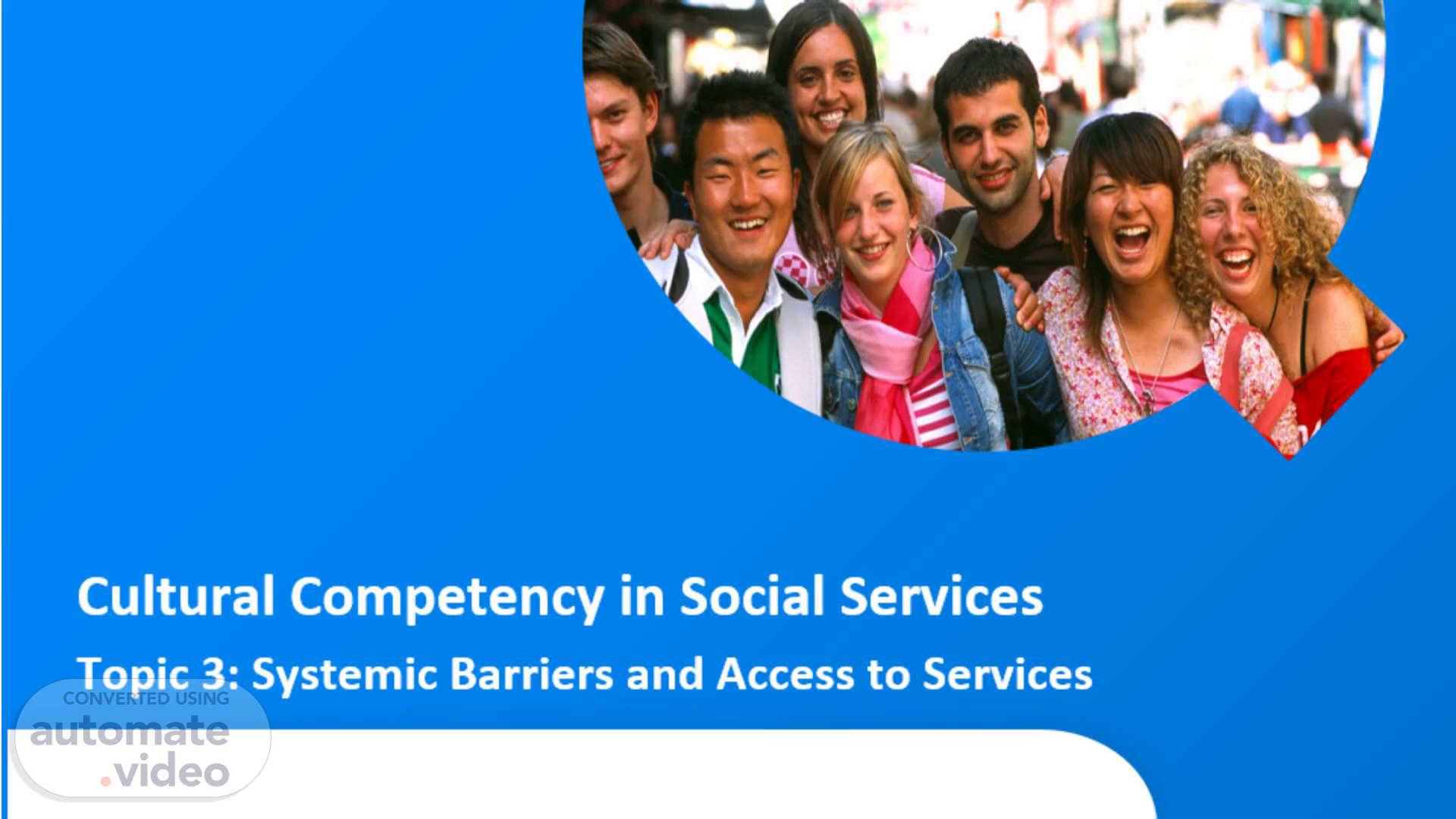Scene 1 (0s)
[Audio] Hello, Welcome to the introduction of third topic of the Course Cultural Competency in Social Services. Name of the Topic we are going to learn about is Systemic Barriers and Access to Services..
Scene 2 (13s)
[Audio] Learning Outcomes for: Systemic Barriers and Access to Services. After this session you will be able to learn: Learning Outcome 1: Examine systemic barriers that prevent diverse populations from accessing social services. Systemic barriers—such as jurisdictional gaps, bureaucratic hurdles, discriminatory policies, and physical inaccessibility—create significant obstacles for marginalized groups in Canada. For instance, governments often debate who pays for First Nations children's services, delaying access to care—a challenge addressed by Jordan's Principle. Similarly, individuals with disabilities face exclusion in federal and provincial services until the Accessible Canada Act mandates change . Analyzing these barriers helps social service professionals recognize inequities embedded in systems and advocate for reforms that improve access for diverse populations. Learning Outcome 2: Identify challenges related to race, ethnicity, socioeconomic status, and other forms of discrimination. Canada's diverse social fabric includes persistent challenges rooted in race, socioeconomic status, and historical injustices. Indigenous and Black communities, for example, experience disproportionate health inequities, overrepresentation in the justice system, and microaggressions in everyday life. Understanding these layered injustices helps social workers identify and challenge oppression in both policies and practice. Learning Outcome 3: Learn about Canadian policies aimed at addressing systemic inequities in social service access. Canada has introduced multiple policies to dismantle systemic inequities. The Accessible Canada Act (2019) aims to eliminate disability barriers in federally regulated sectors. Jordan's Principle ensures First Nations children can receive timely, culturally appropriate services without jurisdictional delays. Additional federal strategies—such as the Anti-Racism Strategy and Employment Equity Act—support racialized, Indigenous, and marginalized populations through targeted funding, data collection, and reforms in employment, health, and immigration systems..
Scene 3 (2m 39s)
[Audio] So what are the Applications of topic in the industry? Industries including healthcare, transportation, education, and employment often face systemic barriers—such as bureaucratic red tape, fragmented service systems, transportation gaps, and socioeconomic discrimination—that hinder equitable access. For example, patients with chronic illness often cite administrative hurdles like paperwork and complex eligibility as significant obstacles. Similarly, disabled individuals frequently encounter inaccessible housing, transport, and societal assumptions that limit employment opportunities. What is the Utilization of this topic in this course and other courses of this program? Courses in social services and cultural competency examine systemic barriers—like eligibility criteria, discrimination, language requirements, rigid application processes, and stigma—that clients face. Through real-world case studies and frameworks like anti-oppressive practice, learners study how system-level obstacles interact with personal factors (like mobility, resources, or distrust), and are taught strategies like case management, community partnerships, and culturally adapted interventions to ease these burdens. What is the Importance of this topic for Career opportunities? Understanding systemic barriers is essential for professionals in social work, public health, community advocacy, and policy roles. Those who can identify and mitigate these constraints—through designing mobile outreach, streamlining processes, or influencing institutional change—are in high demand. Skills in systems thinking, cultural humility, and structural analysis enhance one's ability to create equitable programs and influence policy reform, opening leadership and specialist roles in equity-driven organizations. Let us Start with learning about. Learning Outcome 1: Examine systemic barriers that prevent diverse populations from accessing social services. Thank You for listening..
